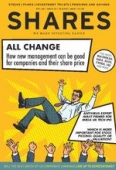Archived article
Please note that tax, investment, pension and ISA rules can change and the information and any views contained in this article may now be inaccurate.
Which is more important: quality or valuation?

Which is more important when considering making an investment into an individual stock: quality of the business or its valuation? It’s an interesting debate which recently cropped up on a social media channel.
The boss of a US asset management company argued that the price of fundamentals, such as price to earnings (PE) or price to cash flow (P/CF), is more important than measures of quality. The latter can include return on capital employed (ROCE) and whether a company is deemed to have an economic moat which keeps competitors at bay.
In response, several social media users argued that the opposite applies; quality is deemed more important than valuation.
One person gave the analogy that you would do better buying property in London’s Mayfair region than in Detroit over the long-term. We assume they implied the former may be a lot more expensive than the latter when making the initial investment, but the returns could be better over time.
Another person suggested that valuation was more important if you frequently rebalanced your portfolio, whereas quality of the business was more important for investors adopting a buy and hold strategy.
HOW TO IDENTIFY QUALITY
We’ve regularly discussed the importance of ROCE in Shares in helping to identify high-quality companies. We like companies which consistently make a good profit on the money they invest in their business, as represented by the return on capital employed figure.
In simple terms, ROCE is operating profit margin multiplied by capital turnover – the latter is calculated by dividing annual sales by shareholders’ equity. The sales figure can be found on a company’s income statement and shareholders’ equity is found on the balance sheet.
ROCE will be based on historical information, whereas many investors will use earnings forecasts to measure the valuation of a share.
There is merit in using forecasts as the stock market is forward looking and the share price represents how the market believes the company will perform in the future. However, you have to remember that forecasts don’t always prove to be correct.
IS A HIGH LEVEL OF ROCE SUSTAINABLE?
Many investors are happy to pay a high earnings multiple to own a quality business, arguing that the long-term returns will more than compensate for the high entry price.
However, this approach assumes that superior levels of ROCE will be maintained indefinitely. In reality, a high or rising ROCE is attractive to competitors or new entrants to an industry. That could serve to challenge a company’s ability to sustain high levels of ROCE.
The concept of an economic moat comes into play here. Traditionally a moat refers to the water around a castle – something that makes it difficult for an invader to reach and conquer it.
An economic moat represents a competitive advantage that enables a business to fight off competition and maintain strong levels of market share.
Financial data and research provider Morningstar uses the concept of economic moats in its stock analysis. It says the moat is a structural feature that allows a firm to sustain excess profits over a long period of time.
How to identify a moat
Morningstar identifies five sources of long term competitive advantage which, where present, may indicate a company has an economic moat.
These include:
Intangible assets. These are brands, patents or valuable licences that explicitly keep competitors at bay.
Cost advantage. A firm that can provide goods or services at lower cost than its peer group has an advantage because it can undercut rivals on price. The firm may also wish to sell products and services at the same price but get a bigger profit margin than competitors.
Switching costs. There is a competitive advantage in charging chunky exit fees to leave a company’s service. It stops customers leaving, unless they are offered a large improvement in either price or performance with a third party.
Network effect. Strong companies can get even stronger when more people use their product or service.
Efficient scale. This is when a market of limited size is effectively served by one or just a few companies. It’s not worth another party entering the market, because their participation would result in insufficient returns for all players.
MOATS CAN BE DESTROYED
It is important to stress that moats, once obtained, are not indestructible. For example, Nokia enjoyed a majority position in the mobile phone market until Apple launched the iPhone.
And more recently, we note Morningstar has downgraded its moat ratings on utility stocks Centrica (CNA) and National Grid (NG.) from ‘narrow’ to ‘none’.
Centrica’s moat loss is attributed to mounting political risk and competitive pressure, as well as the profitability collapse of the gas storage business that the group has ceased to operate. A tariff cap is likely to squeeze margins at Centrica’s British Gas business. Morningstar also believes the proposed merger of two of the UK’s biggest energy suppliers, Npower and SSE (SSE), will create a ‘powerful competitor’.
As for National Grid, Morningstar no longer has confidence that it will generate returns on invested capital above its assumed weighted average cost of capital over a full business cycle.
THE MAGIC FORMULA
Anyone seeking to combine both valuation and quality may wish to look at Joel Greenblatt’s ‘magic formula’ which is about identifying good quality businesses at cheap prices.
Financial data websites like SharePad should have specific filters to apply this formula to the market, although it is worth noting the information will be based on historical data and won’t have predictions on future profits. We will run a feature looking at Greenblatt’s magic formula in a forthcoming edition of Shares. (DC)
What do you think?
We want you to get involved in the debate. Send us your views on whether quality or valuation is more important, and we’ll publish the best responses in the digital magazine. Email yourviews@sharesmagazine.co.uk with ‘Quality valuation debate’ in the subject line.
Important information:
These articles are provided by Shares magazine which is published by AJ Bell Media, a part of AJ Bell. Shares is not written by AJ Bell.
Shares is provided for your general information and use and is not a personal recommendation to invest. It is not intended to be relied upon by you in making or not making any investment decisions. The investments referred to in these articles will not be suitable for all investors. If in doubt please seek appropriate independent financial advice.
Investors acting on the information in these articles do so at their own risk and AJ Bell Media and its staff do not accept liability for losses suffered by investors as a result of their investment decisions.
Issue contents
Big News
- JD Sports is still fighting fit
- ImmuPharma collapses on trial failure
- British Airways owner eyes takeover of Norwegian Air
- Apollo stalks FirstGroup with takeover interest
- Pound pushes to highest level since Brexit vote
- Cyber security firm Avast set for £2.8bn IPO
- Activist investor Elliott rumoured to have Micro Focus in its sights
- Costa spin-off calls at Whitbread gain momentum

 magazine
magazine









